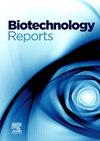覆盖合成气流的生物炭原位部分还原
Q1 Immunology and Microbiology
引用次数: 0
摘要
这项工作的重点是在Ariane®热解原型中,通过从部分氧化区出来的热合成气来部分还原热生物炭。该热解器的专利几何结构,具有单独的热解和部分氧化区,可以轻松管理生物炭和合成气流动。目的是增加生物炭的比表面积,以达到更多的农艺规格,同时保持生物炭中的高碳含量。这种部分还原的实验实现是通过在反应器底部添加部分还原区来实现的,从而使生物炭和合成气之间能够直接接触。这部分现在允许生物炭和合成气流在高温地区(500°C)混合。该部分的加入使生物炭的比表面积增加了250m2/g,且无论生物质流速如何,都能保持生物炭的含碳量。生物炭中约20%的碳通过还原被消耗,并从生物炭转移到合成气中。因此,合成气尤其富含H2和CO2,而CH4耗尽,这为这种气体(生物甲烷、生物氢、生物煤油、热电联产等)开辟了更广泛的开发机会。由于这种活化方法,在质量(比表面积和碳含量)和产生的生物炭数量(无水产量)之间取得了更好的折衷(与以前的原型相比)。本文章由计算机程序翻译,如有差异,请以英文原文为准。
In-situ partial reduction of biochar by overlaying a syngas stream
This work focuses on the partial reduction of a hot biochar by a hot syngas coming out of the partial oxidation zone in the Ariane® pyrolysis prototype. The patented geometry of this pyrolyser, with separate pyrolysis and partial oxidation zones, enables easy management of biochar and syngas flows. The aim is to increase the specific surface area of the biochar to achieve more agronomic specifications, while maintaining a high carbon content in the biochar. The experimental implementation of this partial reduction is achieved by adding a partial reduction zone at the bottom of the reactor, enabling direct contact between biochar and syngas. This part now enables biochar and syngas streams to be mixed in a high-temperature zone (). The addition of this part increased the specific surface area of the biochar by and preserved the carbon content of the biochar regardless of the biomass flow rate. Around of the carbon in the biochar is consumed by the reduction and transferred from the biochar to the syngas. The syngas is thus enriched in particular in and and depleted in , which opens up a wider range of development opportunities for this gas (biomethane, biohydrogen, biokerosene, cogeneration, etc.). Thanks to this activation method, a better compromise has been achieved (compared with the previous version of the prototype) between quality (specific surface area and carbon content) and quantity of biochar produced (anhydrous yield).
求助全文
通过发布文献求助,成功后即可免费获取论文全文。
去求助
来源期刊

Biotechnology Reports
Immunology and Microbiology-Applied Microbiology and Biotechnology
CiteScore
15.80
自引率
0.00%
发文量
79
审稿时长
55 days
期刊介绍:
Biotechnology Reports covers all aspects of Biotechnology particularly those reports that are useful and informative and that will be of value to other researchers in related fields. Biotechnology Reports loves ground breaking science, but will also accept good science that can be of use to the biotechnology community. The journal maintains a high quality peer review where submissions are considered on the basis of scientific validity and technical quality. Acceptable paper types are research articles (short or full communications), methods, mini-reviews, and commentaries in the following areas: Healthcare and pharmaceutical biotechnology Agricultural and food biotechnology Environmental biotechnology Molecular biology, cell and tissue engineering and synthetic biology Industrial biotechnology, biofuels and bioenergy Nanobiotechnology Bioinformatics & systems biology New processes and products in biotechnology, bioprocess engineering.
 求助内容:
求助内容: 应助结果提醒方式:
应助结果提醒方式:


